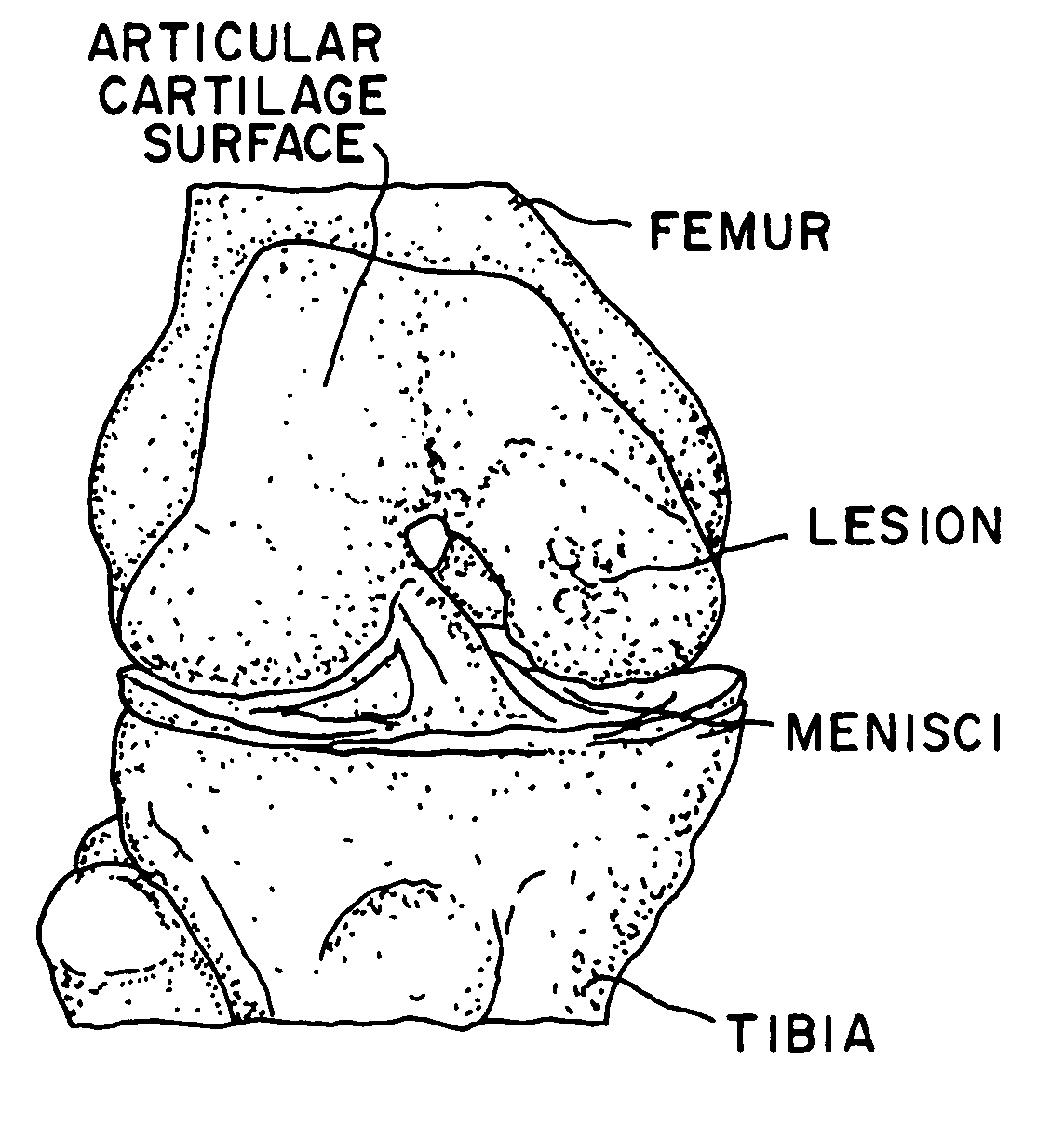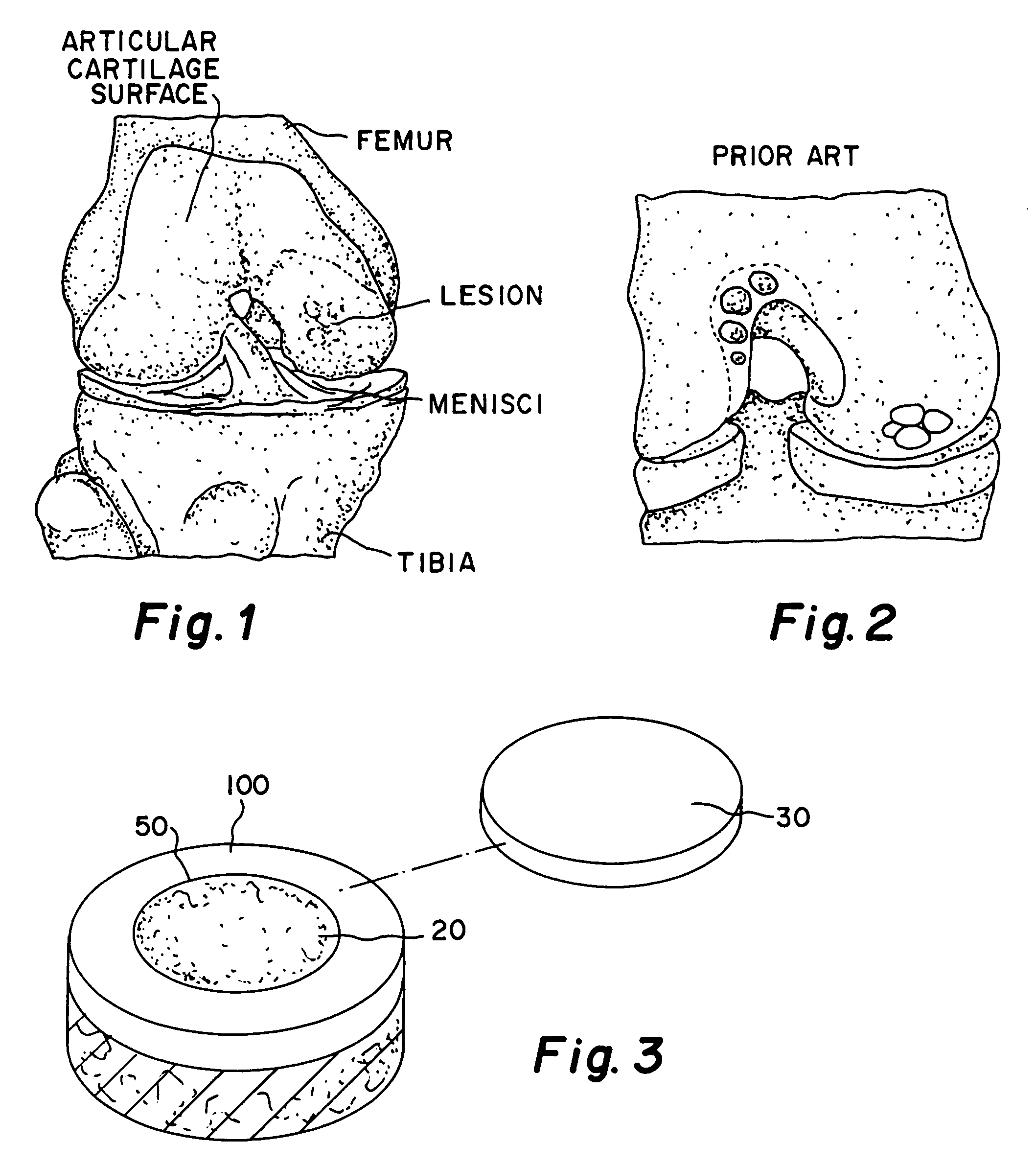Glue for cartilage repair
a cartilage defect and glue technology, applied in the field of glue, can solve the problems of articular cartilage lesions generally not healing, pain or severe restriction of joint movement, and limited hyaline cartilage regeneration, and achieve the effect of increasing chondrocyte migration and proliferation
- Summary
- Abstract
- Description
- Claims
- Application Information
AI Technical Summary
Benefits of technology
Problems solved by technology
Method used
Image
Examples
example 1
[0040]A matrix of minced cartilage putty consisting of minced or milled allograft articular cartilage which has been lyophilized so that its water content ranges from 0.1% to 8.0% with a cartilage content ranging from 25% to 50% by weight is mixed with a carrier of sodium hyaluronate solution (HA) (molecular weight ranging from 7.0×105 to 1.2×106) or any other bioabsorbable carrier such as hyaluronic acid and its derivatives, gelatin, collagen, chitosan, alginate, buffered PBS, Dextran, or polymers, the carrier ranging from 75% to 50% by weight. The cartilage is milled to a size ranging from 0.01 mm to 1 mm. In gel form, the minced cartilage which has been lyophilized so that its water content ranges from 0.1% to 8.0% ranging from 15% to 30% by weight and the carrier ranges from 85% to 70% by weight. The particle size of the cartilage when milled is less than or equal to 1 mm dry in the previously stated range. The cartilage pieces can be processed to varying particle sizes and the ...
example 2
[0041]A matrix of minced cartilage putty consisting of minced or milled allograft cartilage which has been lyophilized so that its water content ranges from 0.1% to 8.0% ranging from 25% to 50% by weight is mixed with a carrier of sodium hyaluronate solution (HA) (7.0×105 to 1.2×106) or any other bioabsorbable carrier such as hyaluronic acid and its derivatives, gelatin, collagen, chitosan, alginate, buffered PBS, Dextran, or polymers ranging from 75% to 50% by weight. In a gel form, the minced cartilage which has been lyophilized so that its water content ranges from 0.01% to 8.0% ranging from 15% to 30% by weight and the carrier ranges from 85% to 70% by weight. The particle size of the cartilage is less than or equal to 1 mm dry ranging from 0.01 mm to 1 mm. The cartilage pieces can be processed to varying particle sizes and the HA or carrier can have different viscosities depending on the desired consistency of the putty or paste. Autologous or allogenic cells which have been gr...
PUM
| Property | Measurement | Unit |
|---|---|---|
| size | aaaaa | aaaaa |
| water content | aaaaa | aaaaa |
| particle size | aaaaa | aaaaa |
Abstract
Description
Claims
Application Information
 Login to View More
Login to View More - R&D
- Intellectual Property
- Life Sciences
- Materials
- Tech Scout
- Unparalleled Data Quality
- Higher Quality Content
- 60% Fewer Hallucinations
Browse by: Latest US Patents, China's latest patents, Technical Efficacy Thesaurus, Application Domain, Technology Topic, Popular Technical Reports.
© 2025 PatSnap. All rights reserved.Legal|Privacy policy|Modern Slavery Act Transparency Statement|Sitemap|About US| Contact US: help@patsnap.com


